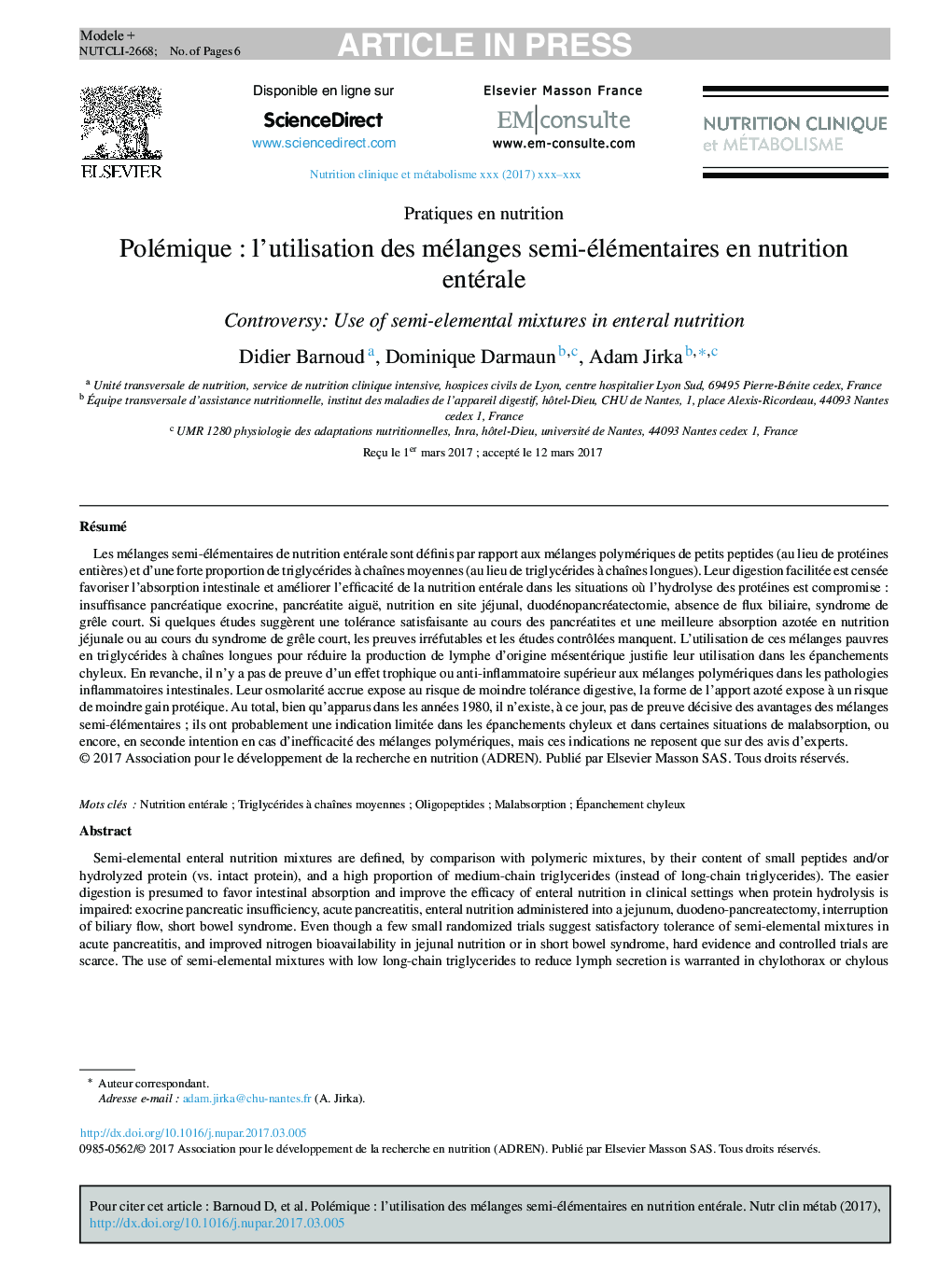| کد مقاله | کد نشریه | سال انتشار | مقاله انگلیسی | نسخه تمام متن |
|---|---|---|---|---|
| 5573197 | 1403880 | 2017 | 6 صفحه PDF | دانلود رایگان |
عنوان انگلیسی مقاله ISI
Polémique : l'utilisation des mélanges semi-élémentaires en nutrition entérale
دانلود مقاله + سفارش ترجمه
دانلود مقاله ISI انگلیسی
رایگان برای ایرانیان
کلمات کلیدی
موضوعات مرتبط
علوم پزشکی و سلامت
پزشکی و دندانپزشکی
بیماریهای گوارشی
پیش نمایش صفحه اول مقاله

چکیده انگلیسی
Semi-elemental enteral nutrition mixtures are defined, by comparison with polymeric mixtures, by their content of small peptides and/or hydrolyzed protein (vs. intact protein), and a high proportion of medium-chain triglycerides (instead of long-chain triglycerides). The easier digestion is presumed to favor intestinal absorption and improve the efficacy of enteral nutrition in clinical settings when protein hydrolysis is impaired: exocrine pancreatic insufficiency, acute pancreatitis, enteral nutrition administered into a jejunum, duodeno-pancreatectomy, interruption of biliary flow, short bowel syndrome. Even though a few small randomized trials suggest satisfactory tolerance of semi-elemental mixtures in acute pancreatitis, and improved nitrogen bioavailability in jejunal nutrition or in short bowel syndrome, hard evidence and controlled trials are scarce. The use of semi-elemental mixtures with low long-chain triglycerides to reduce lymph secretion is warranted in chylothorax or chylous ascites. There is, however, no strong evidence for an improved trophic or anti-inflammatory effect of semi-elemental, vs. polymeric mixtures in chronic inflammatory bowel disease. The higher osmolarity of semi-elemental mixtures exposes to a higher risk of poor gastrointestinal tolerance, and the nature of nitrogen supply, to a risk of impaired net protein accretion. In summary, although semi-elemental mixtures emerged over 30 years ago, there is no decisive proof of their superiority over polymeric mixtures, so the prescription of semi-elemental mixtures should probably be restricted to specific clinical settings such as chylous ascites, and in some cases of severe malabsorption, or as a second line treatment when polymeric mixtures fail. Yet such indications only rely on expert opinions, rather than strong evidence.
ناشر
Database: Elsevier - ScienceDirect (ساینس دایرکت)
Journal: Nutrition Clinique et Métabolisme - Volume 31, Issue 2, May 2017, Pages 87-92
Journal: Nutrition Clinique et Métabolisme - Volume 31, Issue 2, May 2017, Pages 87-92
نویسندگان
Didier Barnoud, Dominique Darmaun, Adam Jirka,